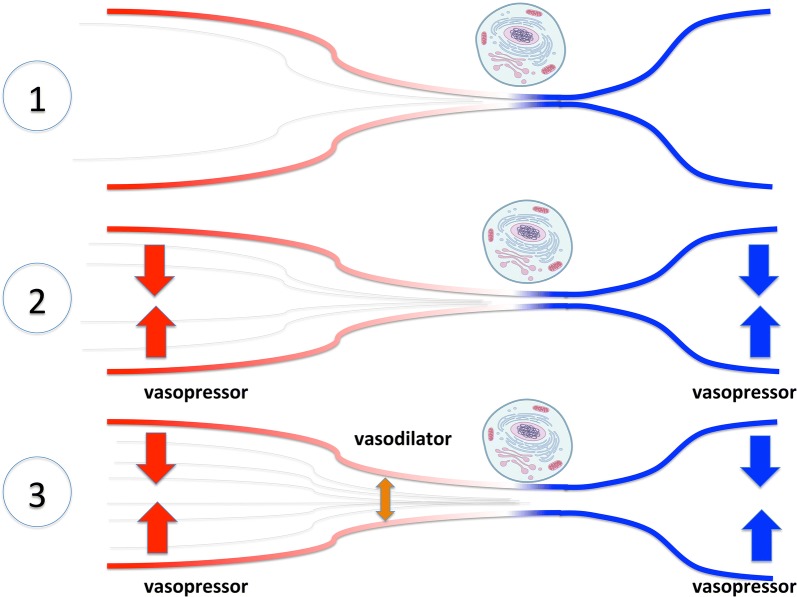Fig. 1.
Schematic representation of microvascular recruitment strategies of microvessels in distributive shock. Impaired tissue perfusion in distributive shock may be associated with low arterial pressure due to systemic vasodilation and intense vasoconstriction of precapillaries arterioles and external compression of capillaries in some vascular territories (Panel 1). Vasopressor agents increase inflow pressure by arteriolar vasoconstriction. Cardiac output can also increase due to venous constriction. Perfusion pressure may not increase despite the arterial pressure rise if the increase in perfusion pressure is insufficient to overcome precapillary vascular resistance and its closing critical pressure (Panel 2). This obstruction—theorized as a vascular bottleneck—might be targeted using vasodilators, which may improve microcirculatory flow and oxygen supply in selected patients (Panel 3)

